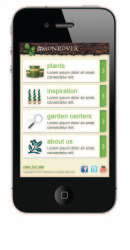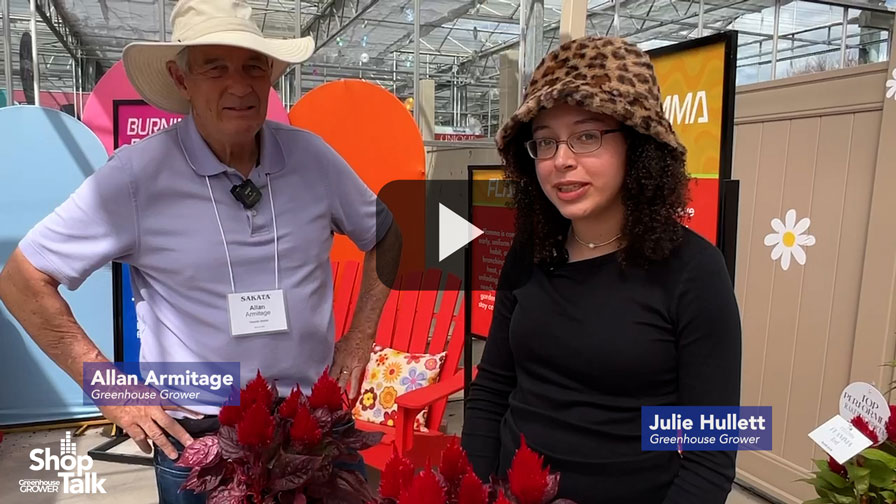Building Your Mobile Website

With more people on tablets, smartphones and other mobile devices than ever before, chances are your consumers have bought into the trend. In response to an upswing in numbers, many growers have created mobile websites to make ordering and searching for information even easier. Costa Farms, Monrovia and Emerald Coast Growers explain why they went mobile, how it improved their customers’ user experience and tips for getting started.
Traffic, Page Views Good Reasons To Go Mobile
When deciding whether to enter the mobile marketplace, it’s important to find out how customers view and use your standard website. Monrovia, for example, launched its mobile website in November 2011 after months of analyzing the numbers on the standard Monrovia.com.
“In late summer/early fall of 2011, we saw that of the 3.1 million annual
visitors to our website, more and more visitors were accessing our site via a mobile device,” says Monrovia’s Vice President of Marketing Pam Wasson. “When we launched the mobile site, 7.5 percent of our traffic was from a mobile device. At the end of December, that number had increased to 12.5 percent. And that is in the slow season, so we are envisioning it’s going to be even higher this spring.”
For Costa Farms, the process began after six months of experience with a revamped standard website and a year of social media know-how.
“We knew we had to do it because with the amount of information we had, the mobile experience was really bad. Plant information was hard to access from your phone,” says Marta Maria Garcia, director of marketing at
Costa Farms.
According to the analytics from CostaFarms.com, the Plant Library, About Us, Garden Tips and Frequently Asked Questions pages are some that made the cut for the mobile version.
Customers Crave The Convenience Of Mobile Access
If you still think your standard website can meet all consumers’ needs, consider people’s motivations for using a computer to access the internet compared to surfing via a smartphone. Each one serves a different purpose. Computers involve a bigger time commitment; mobile is perfect for quick information.
“Both experiences are unique in their own way,” Garcia says. “People are always still going to own a personal computer. PC is still going to be king. It’s like a TV in everybody’s home. I see people gravitating toward smartphones and iPads, but at the end of the day, it is going to be like television. I am a believer in both. There are two different types of consumers. Some are always on the go and like to get their experiences on
the go.”
Aside from the customer’s needs, growers need to consider their own business needs when going mobile.
“Monrovia’s marketing efforts are focused on driving consumers to independent garden centers. And once they are there, we want them to purchase our plants. Our mobile site allows people on the go to find a garden center. Once they are in the garden center, they can get some design ideas and find additional plant details,” Wasson says. “It has proven to be a good tool for the garden center workers and our own sales staff, too. While they may not have a computer or our printed catalog handy, they probably have a smartphone or tablet. They can quickly look up a plant and show it to a customer.”
And the convenience aspect of mobile websites goes beyond buying, selling and promotional needs. Standard websites provide a great opportunity for people looking to do research or sit down and read in-depth articles. That information might help before heading to the store, but mobile can answer questions in the checkout line.
“People can utilize our information when and where it suits them. Have you ever tried to look up some information on your phone with a company that didn’t have a mobile site? It can be frustrating. We would rather provide a positive online experience,” Wasson says.
Garcia agrees that mobile websites accommodate end consumers’ fast-paced lives, herself included.
“Think of yourself as a consumer. You have very little time to do your transactions,” Garcia says. “I live and breathe on my iPhone and iPad. Every time that I find another app that can make my life easier, I do cartwheels in my heart. As a consumer, it is a necessity that you have information at the tip of your hands to access immediately.”
Choose The Right Host, Content For Best Experience
Creating a mobile website from your company’s standard site can prove more complicated than simply copying and pasting content from one place to another. When Emerald Coast Growers went mobile, it started by considering which Internet host company would be able to best complete the job.
“The creation of our mobile website was a result of being proactive in selecting a host. We chose one that already had the ability to convert a site into mobile, even before we decided to offer it,” says Co-owner Paul Babikow. “There are lots of mobile website creators out there, but if you are already tied in with a host package, it sure is nice if they are equally capable.”
Emerald Coast chose Volusion, a host that Babikow says boasts proven reliability and could “offer a dynamic database for our plants, a full online order system, customer relationship management and better up-time than we could provide hosting on our own servers.” The host also provided a quick conversion feature that transformed standard website content into content that could be used on a mobile website.
When it comes to mobile content, it helps to keep in mind what consumers want from their mobile experiences. Although long, detailed variety descriptions work well for those surfing the web at home, mobile users are usually looking for easily-accessible bites of clear-cut information.
“Mobile users are generally looking for specific info, not browsing around, so it was important to show the same info-packed content on our plant pages. We use a small image of the plant, a brief description, size, price, ordering info and availability for that plant – current on bench, as well as the next batch ready with date,” Babkow says.
Garcia says Costa Farms used its standard website to pick the mobile content.
“We knew the top pages that were constantly viewed by our visitors, and we focused on the areas they visited the most,” she says.
Another thing to consider when going mobile is the layout and screen size. To accommodate various mobile devices, from Blackberries to iPads, the website should avoid graphics overload and extra-wide layouts.
“We kept it very simple with a 380-pixel-wide branding logo at the top and very simple navigation text. There are just a few clicks to any plant page,” Babikow says. “Mobile display varies from device to device, but 380 pixel wide looks good and falls somewhere between middle- and larger-scale devices. It’s perfect for smartphones and tablets.”
When constructing the website, the most important thing to address remains how to meet your customers’ needs, and that may require taking a step back to ask others for input.
“We got together with our IT department to lay out what we wanted the experience to be like. We compared and contrasted what we liked and did not like, and outside consultants gave feedback. Then, the information technology department designed it,” Garcia says. ”The tone and the voice are for the end consumer. They are the ones who need the information to make the decisions about what to purchase. It’s all about them.”










